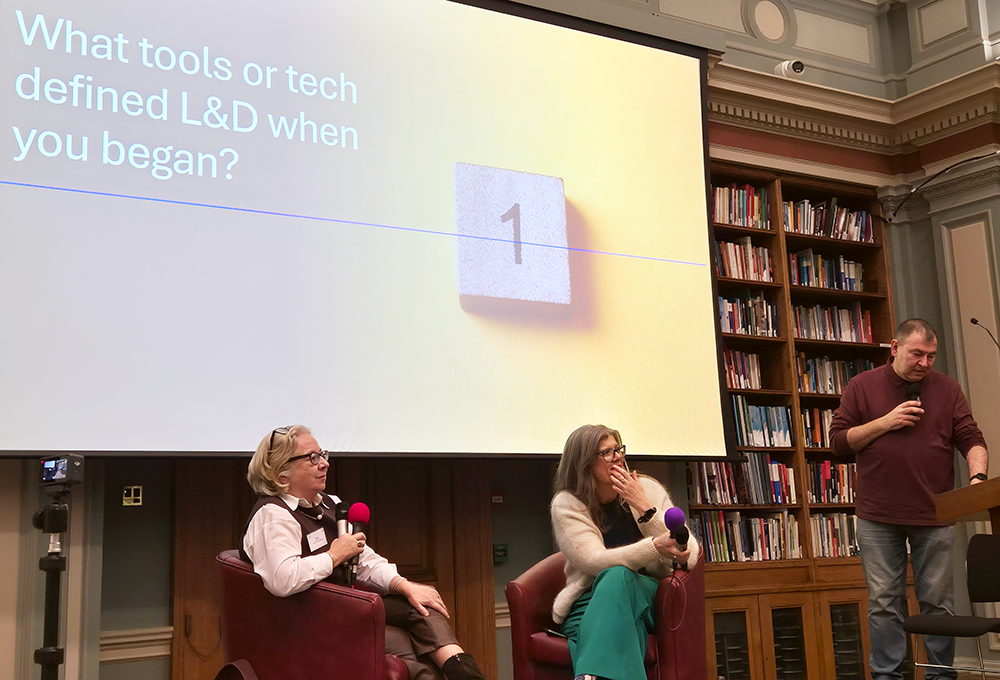More mobile, artificial intelligence, virtual reality – Rob May surveys training technology trends for 2017.
Anyone involved in training, whether the employer, provider, or learner appreciates the value technology brings to the table today. More and more learners are choosing to ditch the traditional classroom setting and instead use technology to allow them to make the best of their training journey.
In fact, recent research [1] found that over half of YMCA learners had used a smartphone in their studies over the past 12 months, while 68% of all learning was undertaken outside of the traditional 9am – 4pm classroom hours. Technology is providing students with the ability to learn when, and from where, is suitable for them.
Add to this, the fact that businesses of all sizes are looking for ways to provide employees with the training they need, without impacting on resources and profitability – and again technology provides the perfect solution.
But, with so much on offer, what are the top technology trends training providers and employers should be looking out for this year?
A rise in VR and AR content
As virtual reality (VR) and augmented reality (AR) become more popular in the mainstream – last year saw many big-tech companies such as Sony, Samsung and the Facebook-backed Oculus, stake their claim on the VR market – it’s likely we’ll see their use in training amplified too.
Presenting an immersive tool which enables learners to become submerged in learning environments, these tools help provide a totally different perspective when it comes to training.
VR is already applied in many learning settings – products like Google cardboard, for example, are being used in a number of schools across the country.
Of course, it’s important to remember that technology should never replace human interaction in learning, but it’s exciting to think that it could help manage some of the simpler tasks.
And as technology evolves with wearables, expect to see more learning content take advantage of VR and AR technology to bring to life a range of subjects through immersive, experiential learning. Whether that’s exploring the inner workings of the human anatomy, to journeying through the solar system.
But, why is 2017 the year these technologies will really take off? Well, recent months have seen the technology move out of prototype stage, bringing with it a number of possible economic benefits. And, as ‘old media’ content, such as books and videos, become commoditised by the internet, publishers will be looking for the next big thing to generate revenue.
Artificial intelligence (AI)
AI is reaching a crucial tipping point – taking the place of human interaction across many sectors and job functions. Now imagine it being used in a similar way in the training sector, to guide learners through basic tasks and problems and thus enabling trainers to devote more time to reaching out personally to the learners who are struggling.
Of course, it’s important to remember that technology should never replace human interaction in learning, but it’s exciting to think that it could help manage some of the simpler tasks.
More mobile
What tech trends piece would be complete without a nod to mobile? We all know that use of mobile in training is ballooning. However, displaying learning content often meant for bigger screens, or offline reading, through a five-inch screen isn’t ideal.
Developers should now be prioritising building training content that is ‘mobile first’ – specifically designed for pocket-sized devices. This will become ever more important as user experience is increasingly prioritised.
Advanced analytics
One of the most important things to consider is analytics. If we are going to succeed when it comes to personalised learning, we have to understand how we learn, and when we learn most effectively.
Training providers should be gathering lots of data via online learning platforms to understand how to tailor a learning experience that gets the best out of individual learners.
It’s also possible that we’ll start to see devices and data from our personal lives coming together to create an optimal learning experience. For instance, a lot of things impact our capacity to learn; sleep patterns, fitness levels, how much time we spend on social media, what kinds of games we enjoy, where we are in the world, our diary commitments – and so on.
This data, and much more, is currently available from a range of apps and wearables that many people are already using. Imagine a learning tool which uses your own personal data to customise an individual training plan and constantly recalibrates to send you tasks and content based on your changing schedule and biometrics. Soon imagination might become a reality.
Planning for the future of training
We need to think about where technology could have the biggest impact in helping our learners to be the best they can be. While it’s tempting to get caught up in the whirlwind that is technology, stepping back and assessing why we need it and the issues it can solve is wise.
In this vein, thinking ‘problem first – technology second’ will help facilitate a culture change that allows learning tech to blend seamlessly into the training experience.
[1] http://www.ymcaawards.co.uk/campaign/making-digital-learning-work/#/?_k=pq8ef4
About the author
Rob May is director at YMCA Awards.



